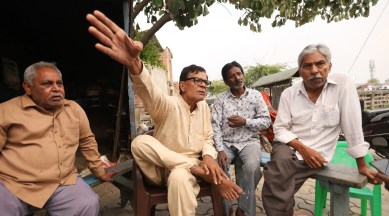Stay updated with the latest - Click here to follow us on Instagram
Inadmissible evidence, doubtful witnesses: the loopholes in Maliana case
The court said that a witness told the court during cross-examination that he was “asked to write names of the accused from the voter list in Transport Nagar police station”.

* Some of the accused persons standing trial were already dead before the incident took place, and names of some accused were picked up from a voters’ list.
* Witness testimonies with contradictions and improvements raised serious doubts, and even a case investigating officer (IO) could not be cross-examined.
monthly limit of free stories.
with an Express account.
* The prosecution submitted photocopies of crucial medical documents such as postmortem reports, instead of original forms, making them inadmissible as evidence.
These are among some of the serious defects in the prosecution’s case flagged by a district court in Uttar Pradesh’s Mathura, which acquitted 41 men for deaths of 68 people, all of them from the Muslim community, at Maliana village in 1987.
Additional District Judge Lakhvinder Singh Sood, in a 26-page judgment passed on March 31, said that “sufficient evidence is not available to convict the accused” and “serious doubts arise” over the credibility of evidence.
In the FIR, the court noted, “names of the accused were entered in the voter list by police”, and some of these accused had “passed away before the incident”. The prosecution’s “plot becomes doubtful when the aforesaid facts appear admittedly in the evidence,” it said.
The court said that a witness told the court during cross-examination that he was “asked to write names of the accused from the voter list in Transport Nagar police station”. The order said, “This witness stated that the name of the accused persons were written by him under pressure of police and he did not ‘see’ the accused at the spot, and he does not even know the accused persons personally.”
The court said witness testimonies were doubtful since there were “contradictions”; that witnesses made improvements in their statements and could not explain the reason for this. It noted that no test identification parade was conducted to test the veracity of the witnesses; instead, they “identified the accused persons in court for the first time”.
It said the IO, Jagveer Singh, was not produced before court to complete his cross-examination.
Crucial medical documents such as the postmortem report of the accused could not be accepted by the court since photocopies of these documents were put in the file rather than original copies. “These photocopies have also been presented in evidence without presenting the original postmortem register before the court, as per law, such forms are not admissible in evidence,” the court noted.
The court also pointed out that there was no recovery of any looted items or weapons from the accused persons. “There is no statement in the prosecution evidence as to which type of weapon was in possession of which accused at the time of the incident,” the court said.
The court noted that no evidence has come on record that the accused had a “common objective with the mob” and they were “aware of that objective”. Instead, the witnesses made allegations against the accused “in the same manner, and no specific role has been shown to any of the accused”.
“The court is unable to come to a conclusion from available evidence that the accused were part of the mob…. There is no circumstantial evidence available on record that the conduct of the accused persons before and after the incident is not proved and from which it appears that the accused persons were part of the common object of unlawful assembly and they had no knowledge of the same,” the court noted.